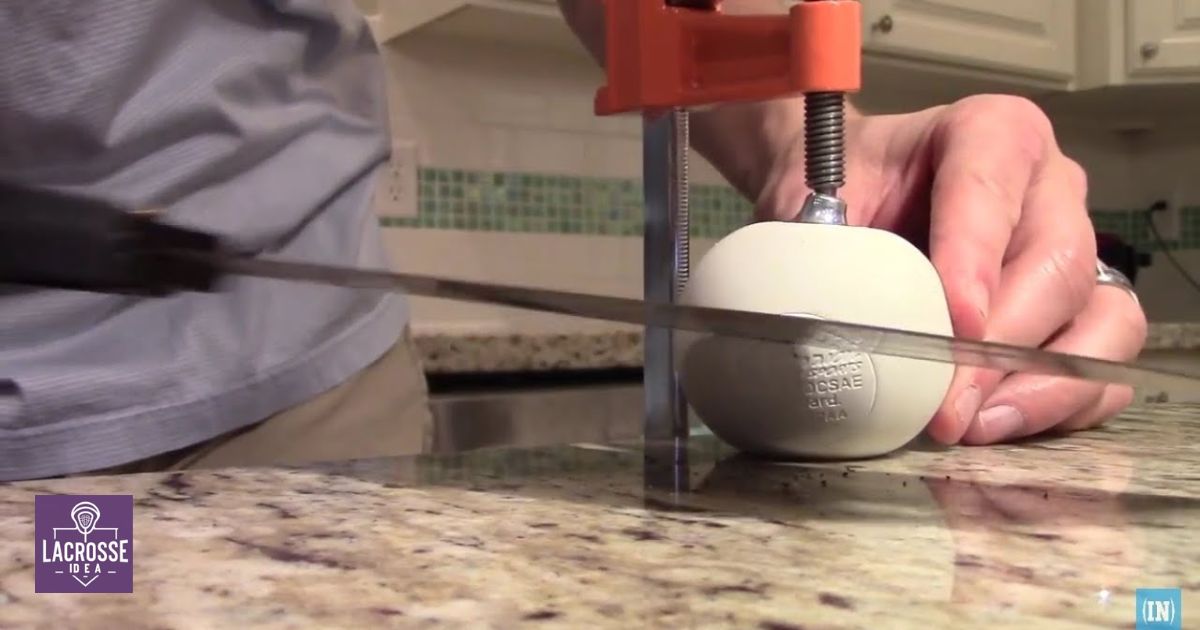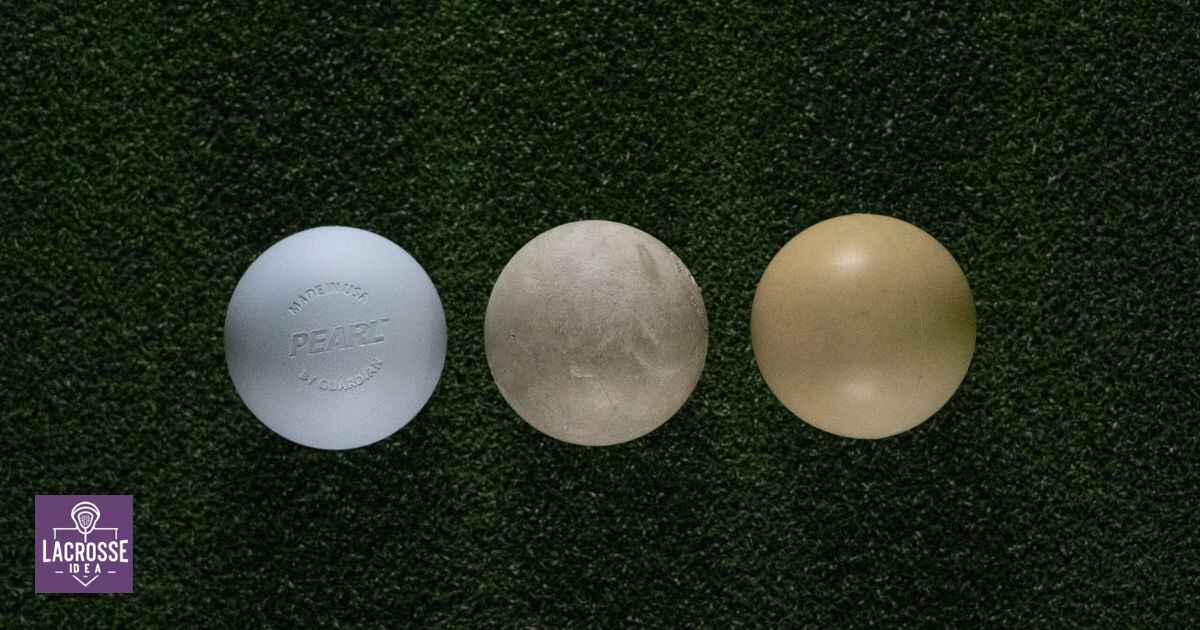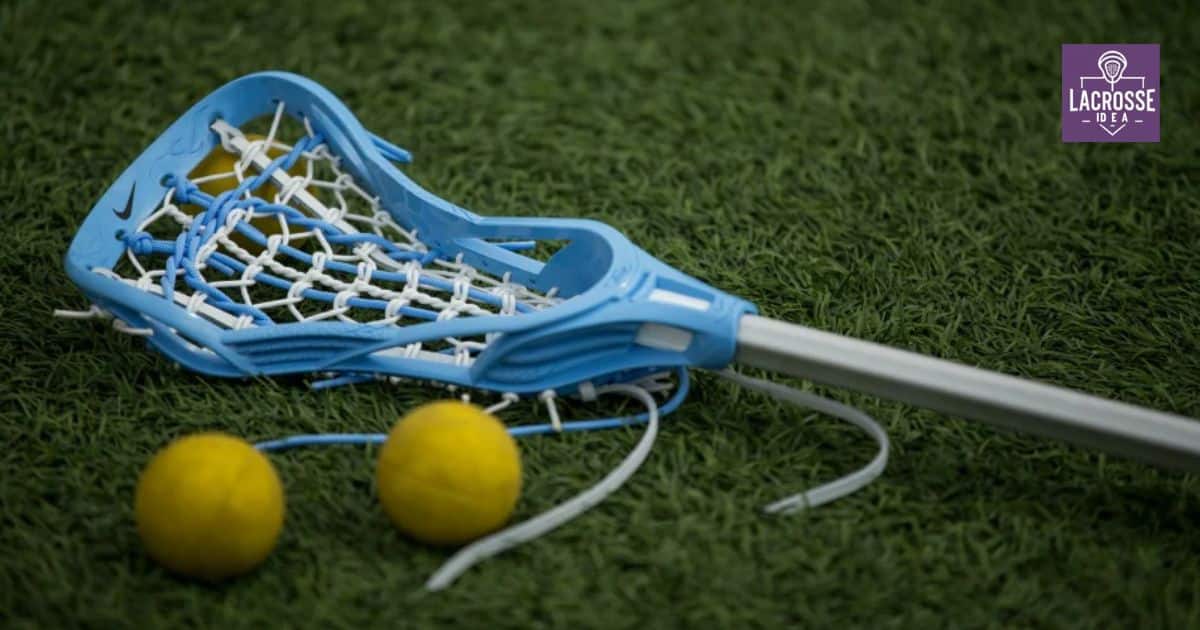Lacrosse, a sport deeply rooted in tradition, brings individuals together in a shared passion for competition and camaraderie. Central to this game is the lacrosse Fball, a crucial component that undergoes a meticulous manufacturing process. Ever wondered how these essential spheres are made? This article delves into the intricate craftsmanship behind the production of a lacrosse ball, exploring the historical and modern materials used, the composition of the ball, and the precise specifications and standards it must meet.
Additionally, this piece sheds light on the complex processes of mould creation and vulcanization, ensuring the ball’s durability and performance. Join us on this enlightening journey as we unravel the secrets behind the creation of this iconic sports equipment.
Key Takeaways
- Lacrosse balls are traditionally made from wood but are now primarily made from vulcanized rubber for durability and performance.
- Vulcanized rubber provides improved grip, bounce, and resistance to wear and tear.
- Lacrosse balls are made through a mould creation and vulcanization process, involving shaping the rubber compound in a mould and heating it to initiate vulcanization.
- Lacrosse balls must meet specific size and weight standards set by governing bodies like the ILF and NCAA.
Historical Materials
One of the key aspects in understanding the production of a lacrosse ball is the historical use of specific materials. Throughout the history of lacrosse, the materials used to make lacrosse balls have evolved significantly. Traditionally, lacrosse balls were made from wood, specifically hickory or ash. These wooden balls were durable but had their limitations, as they were susceptible to cracking and splintering. As the sport of lacrosse gained popularity, the need for more durable and reliable balls arose.
This led to the introduction of rubber as the primary material for lacrosse balls. Rubber balls were not only more durable but also provided consistent performance on the field. Today, lacrosse balls are made from vulcanized rubber, ensuring that they meet the standards set by the sport’s governing bodies. Understanding the historical use of materials provides insight into the continuous improvement and innovation in lacrosse ball production.
Modern Materials
The production of a lacrosse ball has evolved with the introduction of modern materials. Traditionally, lacrosse balls were made from solid rubber, but advancements in technology and manufacturing processes have led to the use of synthetic materials such as vulcanized rubber. Vulcanized rubber offers improved durability, consistency, and performance compared to natural rubber. It provides better grip, bounce, and resistance to wear and tear, making it ideal for the fast-paced and intense nature of lacrosse.
These modern materials also allow for customization, with lacrosse balls now available in a range of colors, allowing players to express their individuality. The use of modern materials ensures that lacrosse balls meet the high standards and demands of the sport, providing players with a reliable and consistent playing experience.
Composition Of A Lacrosse Ball
The composition of a lacrosse ball primarily consists of vulcanized rubber, a synthetic material known for its durability and performance. This material is chosen for its ability to withstand the rigorous demands of the game while maintaining its shape and resilience. The rubber used in lacrosse balls is specially formulated to have a high coefficient of restitution, ensuring optimal bounce and accuracy during play.
The composition may include other additives to enhance grip, such as a textured surface or a tacky coating. These features provide players with better control and handling of the ball, allowing for more precise passes and shots. With the composition of the lacrosse ball established, the next step in the manufacturing process is the creation of the mould.
Mould Creation
To ensure consistent and precise production, the creation of the mould is a critical step in the manufacturing process of lacrosse balls. The mould serves as a template that determines the shape, size, and surface texture of the balls. Here is a breakdown of the steps involved in mould creation:
| Step | Description |
|---|---|
| 1 | Designing the mould: Experienced engineers use computer-aided design (CAD) software to create a 3D model of the mould based on the desired specifications. |
| 2 | Material selection: The mould is typically made from high-quality steel or aluminum to withstand the heat and pressure of the manufacturing process. |
| 3 | Machining the mould: Using CNC machines, the 3D design is translated into a physical mould by cutting and shaping the chosen material. |
| 4 | Surface treatment: The mould is polished and coated to ensure a smooth and durable surface finish. |
| 5 | Testing and adjustments: The mould is tested for accuracy and any necessary adjustments are made to achieve the desired ball dimensions.
The creation of a precise and reliable mould is crucial in ensuring that each lacrosse ball meets the required standards and offers optimal performance on the field.
Vulcanization Process
After the mould creation process, the lacrosse balls undergo the vulcanization process to enhance their durability and performance. Vulcanization is a crucial step in the manufacturing of lacrosse balls, as it transforms the raw rubber into a solid and resilient material. Here are the key steps involved in the vulcanization process:
- Preheating: The rubber compound is preheated to a specific temperature to soften it and prepare it for the next steps.
- Pressing: The preheated rubber is placed in a mould and subjected to intense pressure to shape it into a spherical ball.
- Curing: The moulded rubber is then heated at a high temperature for a specific period of time to initiate the chemical reaction that leads to vulcanization.
- Cooling: After the curing process, the lacrosse balls are cooled down gradually to ensure their structural integrity.
Greasers In Manufacturing
During the manufacturing process of lacrosse balls, greasers play a vital role in ensuring smooth operation and preventing friction-related issues. Greasers are lubricants that are applied to the machinery and equipment used in the production of lacrosse balls. They help reduce friction between moving parts, allowing for efficient and uninterrupted manufacturing.
To give you a better understanding of the importance of greasers in the manufacturing process, here is a table showcasing some common types of greasers used in lacrosse ball production:
| Greaser Type | Characteristics |
|---|---|
| Silicone | Heat-resistant, water-resistant, and long-lasting lubrication |
| Lithium | Good mechanical stability and high resistance to oxidation |
| PTFE | Excellent low-friction properties and resistance to chemical corrosion |
| Mineral Oil | Cost-effective and suitable for general-purpose lubrication |
Innovations In Lacrosse Ball Production
In the realm of lacrosse ball production, ongoing advancements have revolutionized the manufacturing process. These innovations have not only improved the quality and durability of lacrosse balls but have also made production more efficient and cost-effective. Some notable innovations in lacrosse ball production include:
- Advanced molding techniques that ensure consistent shape and size.
- Enhanced material formulations that result in superior grip and bounce.
- Cutting-edge machinery that allows for faster and more precise manufacturing.
- Eco-friendly manufacturing processes that reduce waste and environmental impact.
These innovations have elevated the standard of lacrosse balls, providing players with a more reliable and enjoyable gaming experience. As manufacturers continue to push the boundaries of technology and sustainability, the future of lacrosse ball production looks promising. Now, let’s delve into the manufacturers that dominate this industry.
Manufacturers Of Lacrosse Balls
Prominent manufacturers dominate the lacrosse ball industry. These manufacturers play a crucial role in producing high-quality lacrosse balls that meet the standards set by the sport’s governing bodies. They invest heavily in research and development to ensure that their products are durable, consistent, and safe for players to use. Some of the top manufacturers in the market include STX, Warrior, Brine, and Maverik.
These companies have established themselves as leaders in the industry, providing lacrosse balls to professional teams, college programs, and recreational leagues around the world. They have built a reputation for delivering reliable and trustworthy products, which has earned them the trust and loyalty of players and coaches alike. As the demand for lacrosse balls continues to grow, these manufacturers continue to innovate and improve their production processes to meet the evolving needs of the sport.
Manufacturing And Specification Standards
Leading manufacturers in the lacrosse ball industry adhere to strict manufacturing and specification standards to ensure the production of high-quality and regulation-compliant lacrosse balls. These standards are put in place to guarantee consistency, durability, and safety of the balls. The manufacturing and specification standards include:
- Material: The balls are made from solid rubber, specifically vulcanized rubber, which provides the necessary hardness and bounce.
- Size and Weight: Lacrosse balls must have a diameter of 2.5 to 2.75 inches and weigh between 5 and 5.25 ounces to meet regulation standards.
- Color: The official color of a lacrosse ball is solid white, which helps with visibility during gameplay.
- Testing: Manufacturers conduct rigorous testing to ensure the balls meet the required hardness, weight, and durability standards.
Regulations On Size And Weight
Manufacturers in the lacrosse ball industry must adhere to specific regulations regarding the size and weight of the balls. These regulations are in place to ensure consistency and fairness in the game, as well as to protect the safety of the players. The governing bodies, such as the International Lacrosse Federation (ILF) and the National Collegiate Athletic Association (NCAA), have established standards that manufacturers must follow.
According to these regulations, a lacrosse ball must have a diameter of 2.5 to 3 inches and a weight of 5 to 5.25 ounces. This ensures that all lacrosse balls used in official games meet the same specifications, allowing players to play the game with confidence and a sense of belonging to a universal standard.
| Regulation | Specification |
|---|---|
| Diameter | 2.5 to 3 inches |
| Weight | 5 to 5.25 ounces |
Appearance And Characteristics
After adhering to regulations on size and weight, lacrosse ball manufacturers focus on ensuring the desired appearance and characteristics of the balls. To achieve this, they employ various techniques and materials:
- Vulcanization: The balls are subjected to high heat and pressure, which helps to create a durable and long-lasting product.
- Rubber Composition: The composition of the rubber used in the balls is carefully selected to provide the desired bounce and grip.
- Color Options: Lacrosse balls come in a range of colors, allowing players to personalize their equipment and easily locate their balls on the field.
- Texture: The balls have a smooth surface with slight dimples, which helps to enhance grip and control during play.
Cost Considerations
What factors contribute to the cost of manufacturing lacrosse balls? Several key elements influence the overall cost of producing lacrosse balls. Firstly, the quality of the materials used plays a significant role. High-quality rubber is essential for durability and performance, but it comes at a higher price. Additionally, the manufacturing process itself incurs costs, including labor, machinery, and maintenance. Automation can help reduce labor costs, but initial investments in machinery can be substantial.
Furthermore, transportation costs must be considered, as lacrosse balls are typically produced in specific regions and then shipped to various locations. Lastly, market demand and competition can impact pricing, as manufacturers must balance affordability with profitability. By carefully considering these factors, lacrosse ball manufacturers can determine the most cost-effective approach while maintaining high-quality products.
FAQ’s
Is lacrosse ball soft or hard?
Lacrosse balls are dense and hard, unlike tennis balls. Under stress, they don’t become softer. Lacrosse balls are an effective massage tool that can help sore muscles feel better and function better. Self-myofascial release is a technique used in lacrosse ball massage.
What color lacrosse balls do girls use?
From early youth lacrosse to NCAA collegiate women’s lacrosse and the WPLL, yellow lacrosse balls are used in women’s lacrosse.
Do lacrosse balls help?
A lacrosse ball can help break up the connective tissue surrounding your muscles, which can become rigid from prolonged sitting, when used for self-myofascial release, also known as massage. The lacrosse ball’s capacity to release tight areas is what distinguishes it from a foam roller.
How to play lacrosse?
Two teams, each with ten players on the field, compete in lacrosse. Players must carry the ball down the field to shoot into the net of the opposing team using sticks with webbed baskets. They are not permitted to touch the ball with their hands.
Conclusion
In conclusion, the process of making a lacrosse ball involves historical and modern materials, composition and mould creation, as well as the vulcanization process. Manufacturing and specification standards, regulations on size and weight, and appearance and characteristics are all carefully considered. The irony lies in the seemingly simple object of a lacrosse ball, which actually undergoes a complex manufacturing process. This creates a vivid image of the intricate craftsmanship behind this seemingly ordinary sports equipment.








